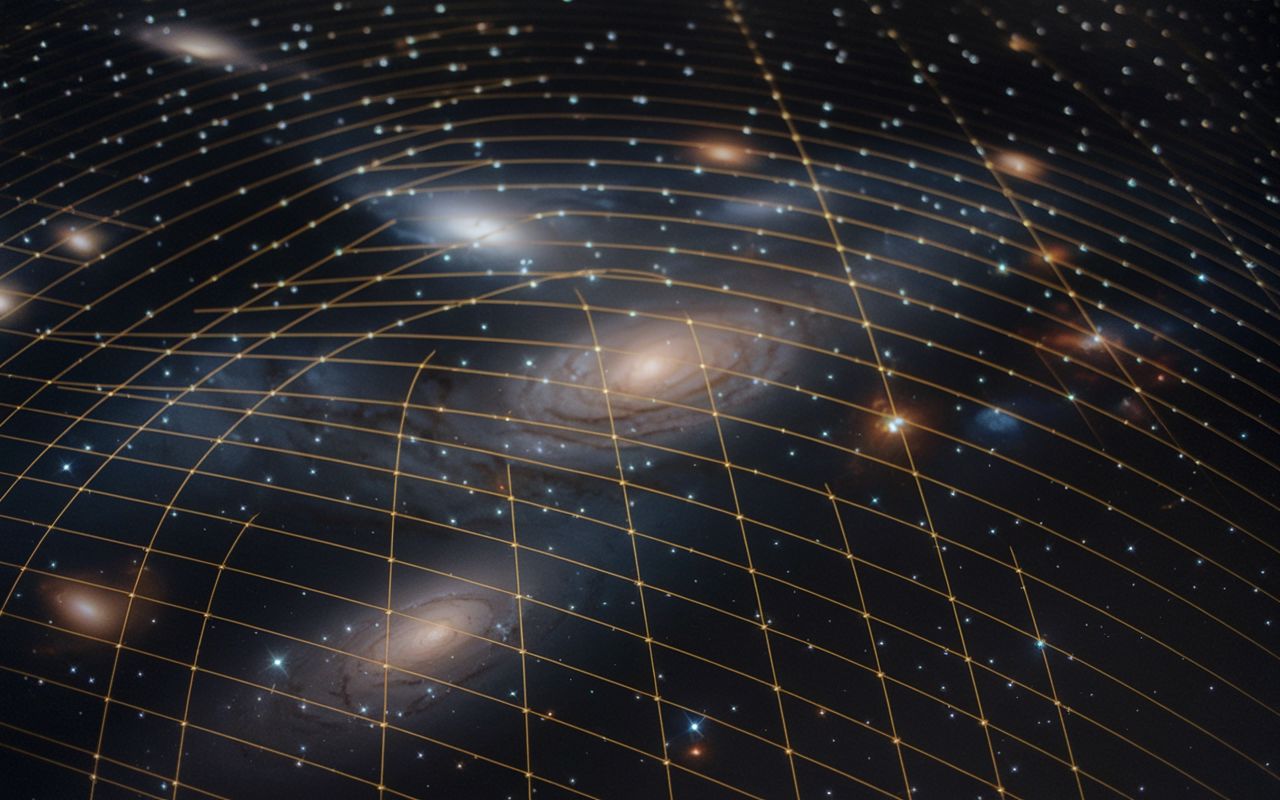Is our universe less structured than expected? 🌀
Published by Adrien,
Source: Journal of Cosmology and Astroparticle Physics
Other Languages: FR, DE, ES, PT
Source: Journal of Cosmology and Astroparticle Physics
Other Languages: FR, DE, ES, PT
Follow us on Google News (click on ☆)
Researchers from the University of Pennsylvania and the Lawrence Berkeley National Laboratory combined two cosmological datasets to study this evolution. Their goal: to compare the current distribution of matter with that predicted by Einstein's theory of gravity. The results largely confirm existing models, but a slight discrepancy has intrigued scientists.

The study relies on the analysis of data from the Atacama Cosmology Telescope (ACT) and the DESI spectroscope. ACT provides a mapping of the cosmic microwave background (CMB), which dates back to 380,000 years after the Big Bang. Meanwhile, DESI allows for the study of the distribution of current galaxies and their evolution over billions of years.
The researchers superimposed these observations to trace the history of cosmic matter. Like a three-dimensional scan of the sky, this approach enabled them to compare ancient and recent structures and observe how matter has arranged itself under the influence of gravity.
The gravitational lensing effect, a phenomenon predicted by Einstein, played a key role in this analysis. Light from the CMB is distorted as it passes through massive concentrations of matter, allowing scientists to infer the distribution of cosmic structures over time. DESI, on the other hand, identifies distant galaxies that serve as markers to map this evolution.
By examining this data, the team found that the density of matter appears slightly less contrasted than expected at certain recent epochs, particularly around four billion years ago. A key cosmological parameter, called Sigma 8 (σ₈), measures these density variations. However, its value seems slightly lower than that predicted by standard models.
If this difference is confirmed, it could indicate a slowdown in the formation of cosmic structures. A greater role of dark energy, responsible for the accelerated expansion of the Universe, might be the cause. But scientists remain cautious, noting that the observed discrepancy could also result from statistical fluctuations.
Future observations, particularly from the Simons Observatory, will refine these measurements. With improved precision, researchers hope to resolve this anomaly and determine whether the Universe is truly evolving in an unexpected way.
What is gravitational lensing?
Predicted by Albert Einstein in 1915, gravitational lensing is a phenomenon where light from a distant object is bent by the presence of an intermediate mass. This mass, such as a galaxy cluster, curves spacetime and acts like an optical lens.
This phenomenon allows astronomers to observe very distant objects that would otherwise be too faint to detect. By amplifying their light, it reveals details about the early universe and the distribution of invisible matter, such as dark matter.
There are two main types of gravitational lenses: strong and weak. Strong lenses produce multiple images and spectacular luminous arcs, while weak lenses cause slight distortions in the shapes of galaxies, detectable statistically.
By measuring these distortions, researchers can map the distribution of cosmic mass and test the validity of gravitational models. It is an essential tool for understanding the evolution of the Universe and its large-scale structures.